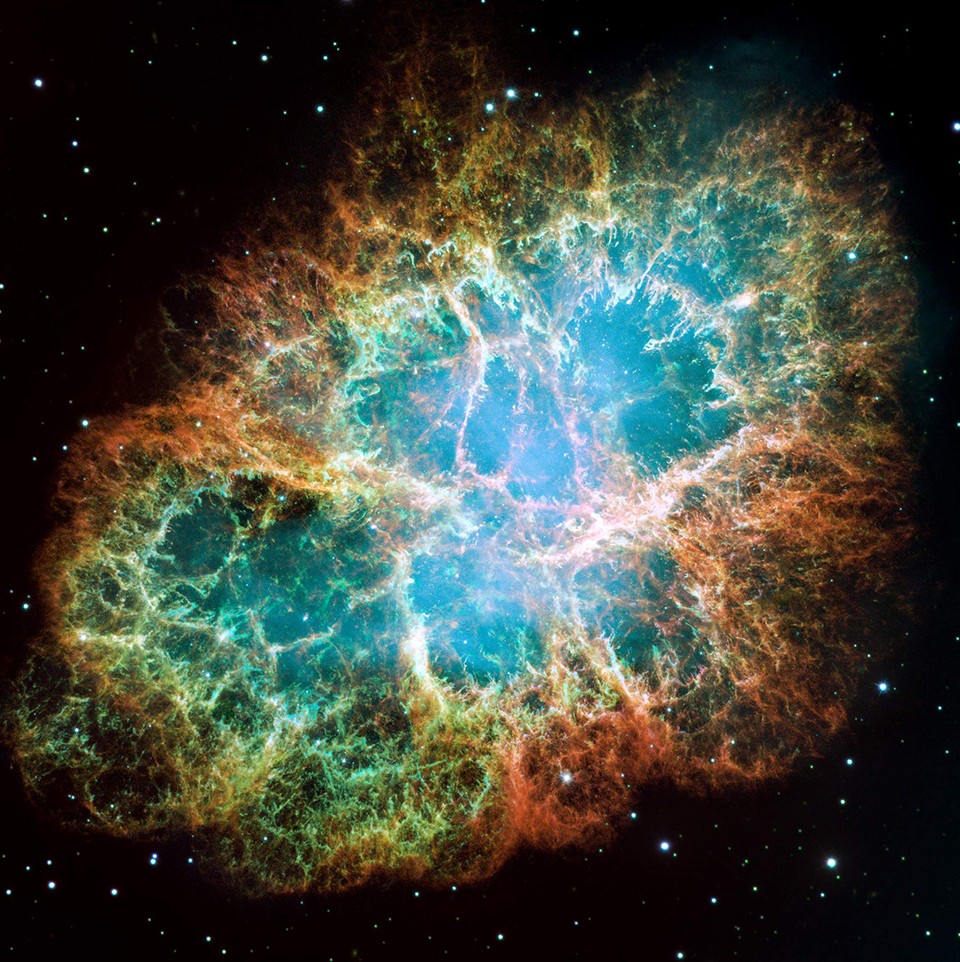
The mosaic image above was taken by NASA's Hubble Space Telescope of the Crab Nebula, a six-light-year-wide expanding remnant of a star's supernova explosion. (Image Credit: NASA)
News Release | Awards & Grants

The mosaic image above was taken by NASA's Hubble Space Telescope of the Crab Nebula, a six-light-year-wide expanding remnant of a star's supernova explosion. (Image Credit: NASA)
Friday, September 6, 2019
Alumni, Research
By Amanda Alaniz
RIO GRANDE VALLEY, TX – The National Science Foundation recently awarded UTRGV’s Department of Physics and Astronomy a grant to further its gravitational wave research.
The project, “Support for LIGO (Laser Interferometer Gravitational Wave Observatory) Data Analysis and Instrumentation Research at UTRGV,” explores experimental innovations and new data analysis techniques to help detect additional sources of gravitational waves.
The nearly $375,000 grant was awarded for three years, from Aug. 1, 2019 through July 31, 2022.
Investigators for the project are:
Gravitational waves were discovered in 2015, and two different types of sources are known – viz. binary black holes and binary neutron stars. UTRGV’s research will explore more in depth the core collapse supernovae (the end stage of a massive star) as a possible gravitational wave source.
The detection of the possible source from the core collapse supernovae proved to be difficult to detect because of the weak signal strength and the rarity of the event, Mukherjee said.
The team is proposing a new data analysis technique that is expected to enhance the detection of gravitational waves from the core collapse.
The project also will investigate the effects of air turbulent noise on the gravitational wave detector and other experimental developments.
The grant additionally will help support the participation of several graduate students in the research.
Mukherjee said they are excited about the possibilities the grant provides.
“Over the last decade or so, we’ve been continuously funded,” she said, “and this gives us a lot of confidence. It means the research we’re doing at UTRGV is of importance on a national and global scale. The gravitational wave research group is a part of the LIGO Scientific Collaboration, which is an international community of more than a thousand scientists from all over the world. You can imagine how excited we are to take our place in this very important community.”
Goals for the project are to keep expanding gravitational wave research and help train students to develop in the field.
ABOUT UTRGV
The University of Texas Rio Grande Valley (UTRGV) was created by the Texas Legislature in 2013 as the first major public university of the 21st century in Texas. This transformative initiative provided the opportunity to expand educational opportunities in the Rio Grande Valley, including a new School of Medicine and a School of Podiatry, and made it possible for residents of the region to benefit from the Permanent University Fund – a public endowment contributing support to the University of Texas System and other institutions.
UTRGV has campuses and off-campus research and teaching sites throughout the Rio Grande Valley including Brownsville (formerly The University of Texas at Brownsville campus), Edinburg (formerly The University of Texas-Pan American campus), Harlingen, Weslaco, McAllen, Port Isabel, Rio Grande City and South Padre Island. UTRGV, a comprehensive academic institution, enrolled its first class in the fall of 2015; the School of Medicine welcomed its first class in the summer of 2016, and the School of Podiatric Medicine in the fall of 2022.